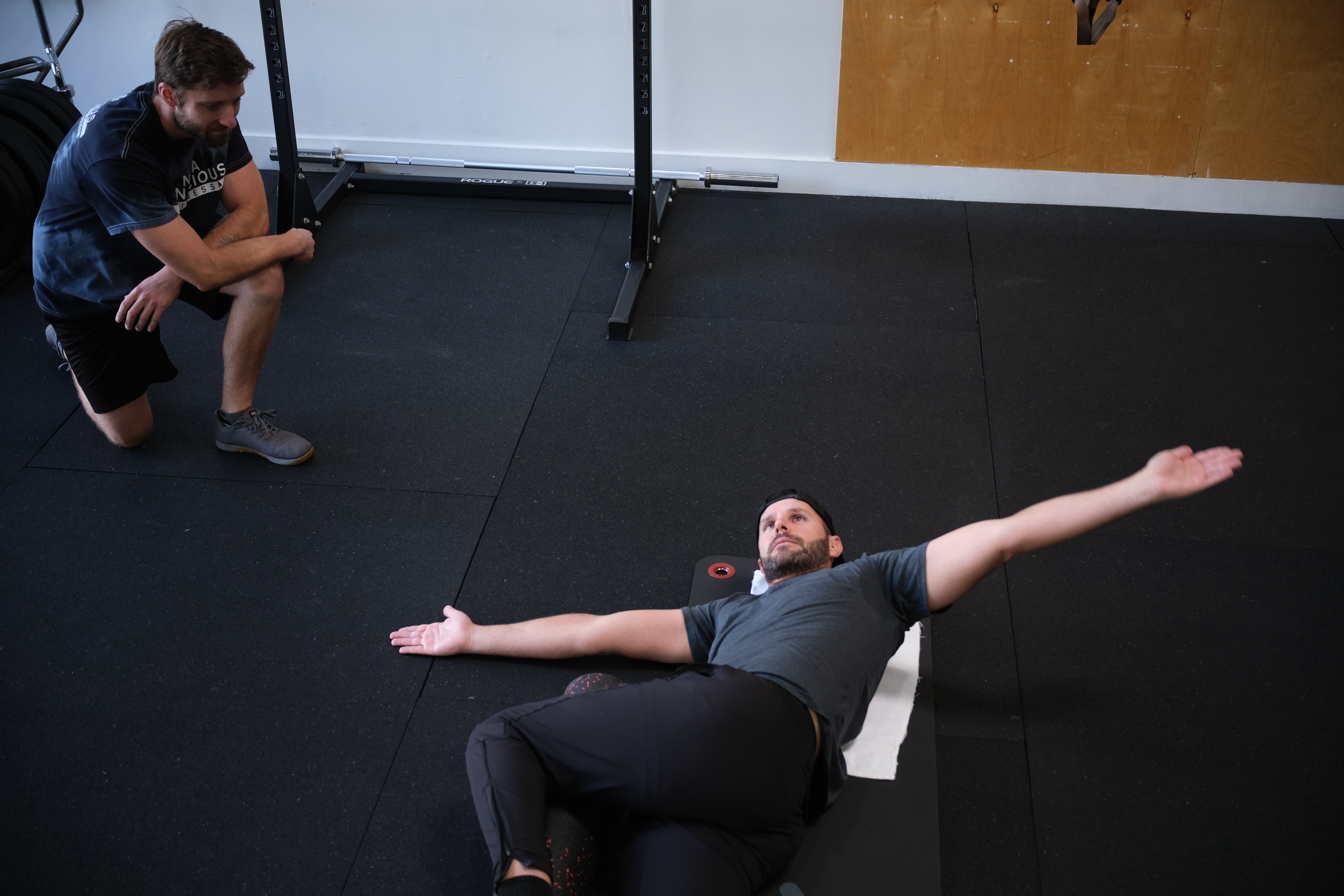Gymnasts have some of the most impressive body mechanics in the athletic world. Standing on top of a thin beam with their arms projected out elegantly, their legs are positioned in a precise manner to ensure an undisturbed sense of balance, their back maintains an upright position demonstrating anatomical alignment, their head sits atop their neck absent of any hunching, and their gaze is projected in acute detail in front of them. Similar to the drawing of The Vitruvian Man by Leonardo Da Vinci, the majestic pose of a gymnast standing atop a balance beam exemplifies optimal postural alignment to where the body is free of the majority of flaws caused by the presentation of postural neglect our society has become accustomed to.
Symptoms of suboptimal posture present themselves in a multitude of areas throughout everyday life. However, if we walk through our local grocery store, dine at our favorite restaurant, or simply join our colleagues at our workplace, more often than not, we’ll see a prime example of what the antithesis of a gymnast’s pristine posture looks like. We might see a few heads tilted downward gazing at a phone with a rounded cervical spine. What follows is usually an arched upper back and collapsed shoulder blades. It’s true that iPhones and Android smartphones have evolved our society into an advanced human race capable of phenomenological feats to make our lives faster and less complicated. However, our posture has suffered significantly.
As the forehead is consistently hinged downward, the cervical portion of our spine flexes creating an arch. Remaining in this rounded position causes the thoracic spine to round as well. Additionally, as the thoracic spine rounds, the chest gets scrunched together, causing the armpits to get closer together and the shoulder blades to slide anteriorly toward the front of the body. The result is forward flexion of the neck and upper back portion of the spine. As the spine rounds forward, we adopt a bodily shape similar to the Hunchback of Norte Dame. As a result, neck, shoulder blades, and upper back pain can occur along with a cornucopia of neuromuscular and skeletal afflictions.
The symptoms of neck, upper shoulder, and mid back are common problems our newer personal training clients bring up as they first embark on a new fitness journey. A cue that resonates with exercise participants that relieves this situation is to “park the shoulder blades down and back.” These movements are commonly understood in the exercise physiology world as scapular retraction and scapular depression. Scapular retraction is the backward gliding of the shoulder blades along the ribcage, bringing the shoulder blades closer to the spine. Scapular depression is pulling the bottoms of the shoulder blades downward toward the hips. When performing this movement, the muscles surrounding the posterior border of shoulder blades activate and pull the shoulders back. The result of this action pulls the head upright and opens the chest.
Parking the shoulder blades down and back is one of the first steps to improving postural awareness and resolving the collapsed forward effects of suboptimal posture. Perhaps we can be more aware of our posture and use the example of how a gymnast holds their body upright to live with less pain in our neck, upper back, and shoulder blades.
Sean McCawley, the founder and owner of Napa Tenacious Fitness in Napa, CA, welcomes questions and comments. Reach him at 707-287-2727, napatenacious@gmail.com, or visit the website napatenaciousfitness.com.

